The decimation of the morning raid on Kenley had shaken Luftwaffe commanders. The British, who were supposed to have been on the ropes, were able to send more than 4 wings - 13 squadrons - to intercept the raid, negating the planned numerical superiority of the escorting Luftwaffe fighters.
In the Zerstorer and Stuka units however, morale was still high. The Bf110 C4s and C7s of Luftflotte 2 and 3 had not been over-stretched, and the Ju87s only sparingly used. Most units were at full strength.
Kesselring and Sperrle ordered the pressure on the RAF to be maintained, despite the earlier losses. Dive bombers would be used, in 2 x 2 raid formations, with 2 staffeln of dive bombers escorted by 2 staffeln of fighters. The raids would have several objectives:
- degrade selected British RDF stations in preparation for attacks the following day
- attack undamaged RAF forward airfields to prevent their use for early interception
- test the ability of the RAF to respond to sustained offensive pressure
On the basis of communications from the General Staff, a broad target list was allocated:
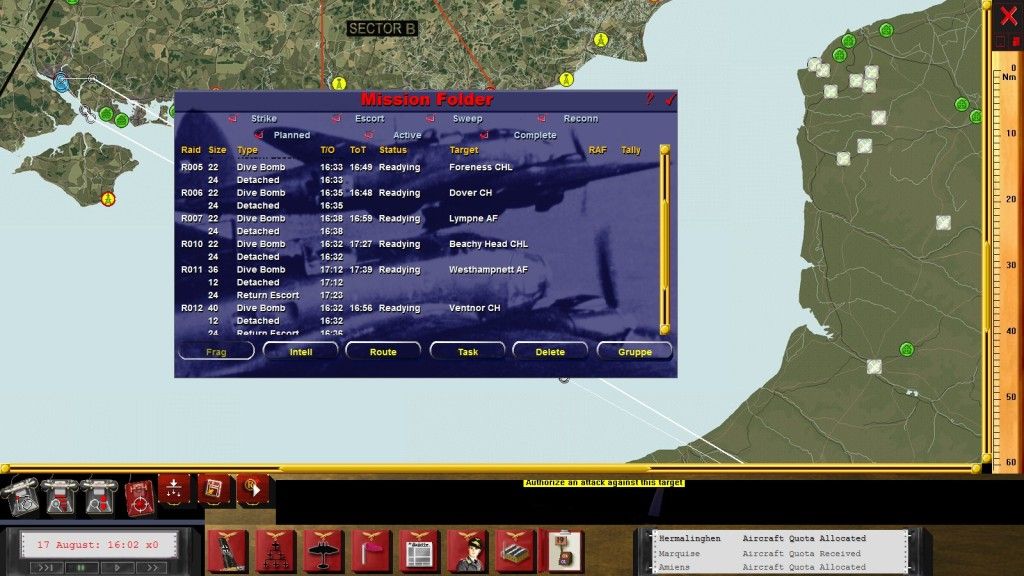

The Stukas went in first, flying in low across the Channel, with 109s in high escort.
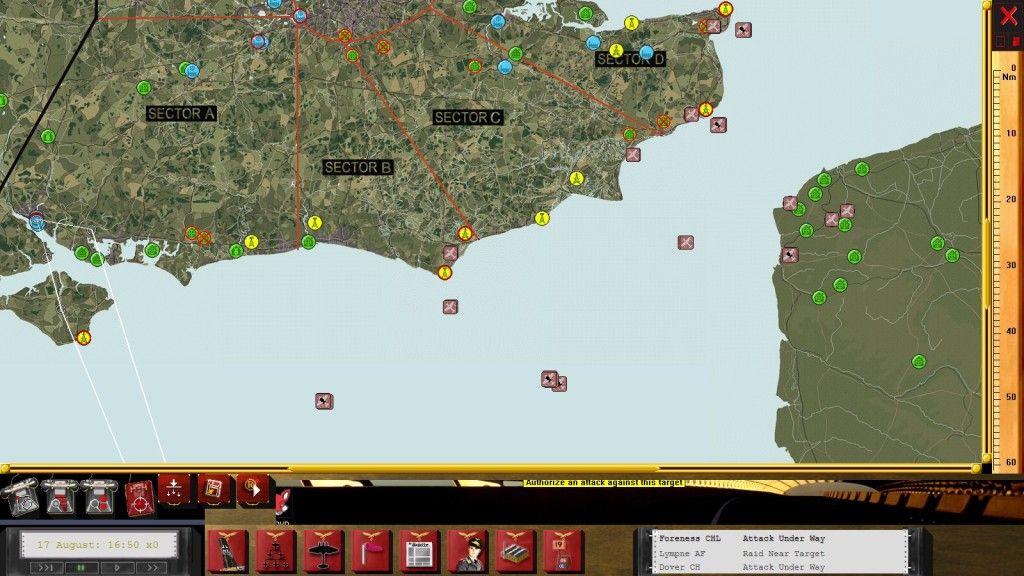
The raids hit their targets, virtually unopposed. 5 RAF aircraft were destroyed or damaged for the loss of none of our own.

Only the raid on Ventnor was met in any strength, by two RAF squadrons, but this engagement was not decisive. No RAF were claimed, and no losses reported.
WESTHAMPNETT fighter command airfield
A satellite to the main field at Tangmere, Westhampnett had largely escaped unscatheed, until now. Recon had shown a squadron of Hurricanes was based there, and intelligence reports indicated that this was 145 Squadron RAF, which had been seen in action over Kenley earlier in the day.
Stukas were assigned to the attack. They would be escorted in by 109s, but shepherding them home again would be the Bf110C4s of III/ZG76.
The leadup to Adlertag had not been kind to III/ZG76. Losses had mounted quickly. On 11 July III/ZG76 were over the Channel as escort to Ju-87s. The Bf 110s came under fierce attack by RAF fighters, and Lt. Friedrich-Wolfgang Graf von und zu Castell (7.Staffel) was killed while Staffelkapit�n of 9.Staffel, Oblt. Gerhard Kadow force-landed inland of the English coast; the most notable loss however was the nephew of Hermann G�ring, Oblt. Hans-Joachim Goring, who crashed fatally near Portland. One other Bf 110 was lost in that terrible action.
Those men who were left however, were battle hardened.
RDF stations in the south-west had not been the subject of significant attention early in the campaign, and the Stukas were met by 145 Squadron, scrambling from Westhampnett, while still over the Channel. Hurrying to their rendezvous point from their base in France, III/ZG76 Hauptmann Friedrich-Karl Dickor� sent his men into action.

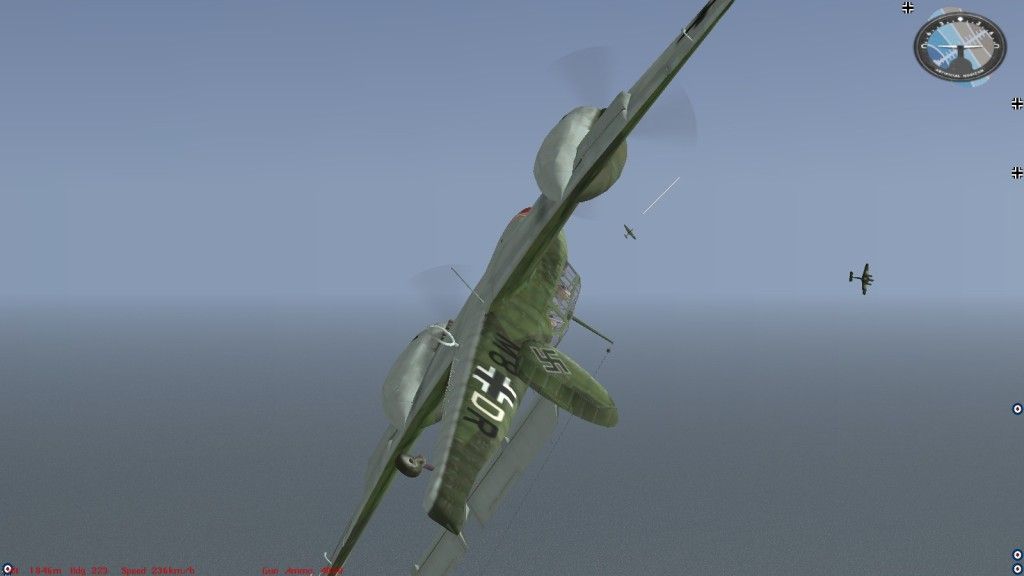
He quickly lined up a Hurricane for himself. Within seconds he could see the pilot was inexperienced, skidding and weaving inexpertly, instead of using his tighter turning radius to get the better of the Bf110.
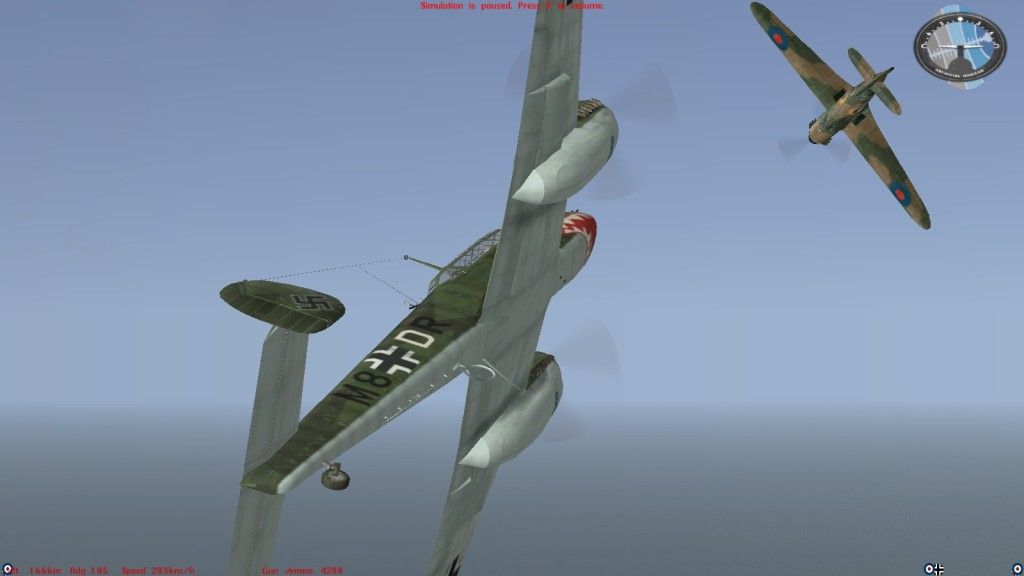
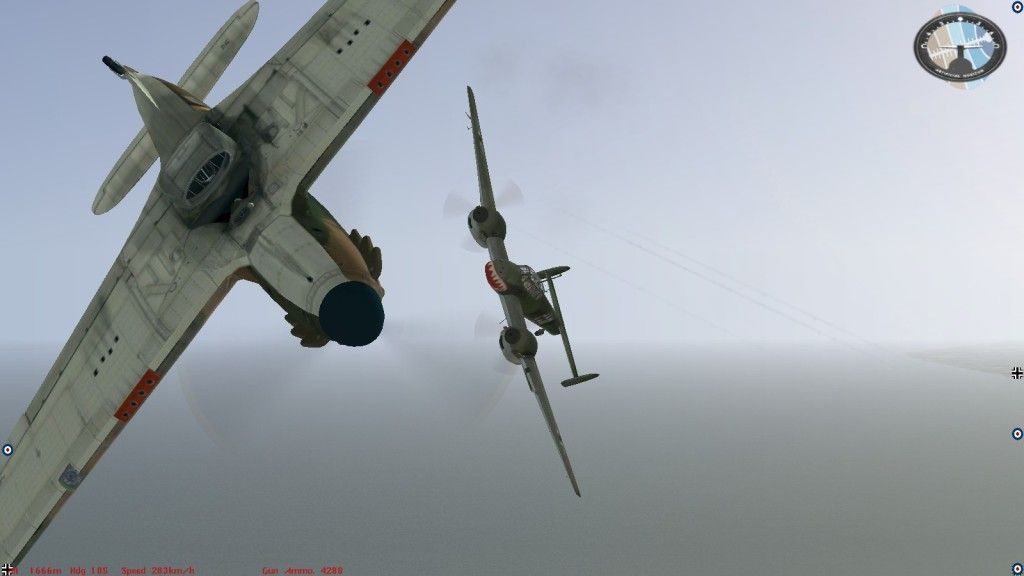
After a short pursuit, Dickore had the Hurricane in his sights.
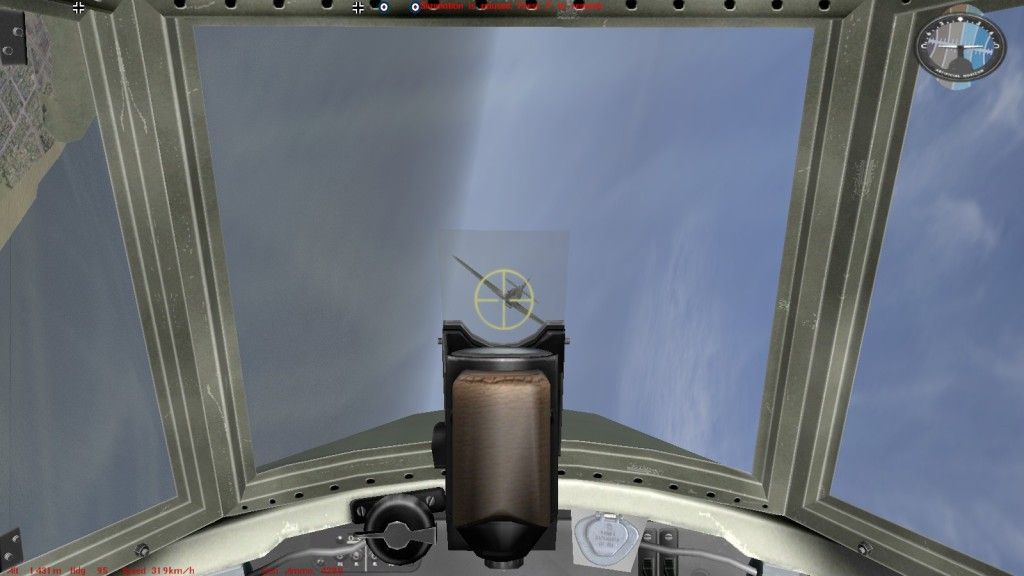
The Bf110s four 7.92 mm MG 17 machine guns and two 20 mm MG FF/M cannons made short work of the hapless RAF pilot, shredding his wings.
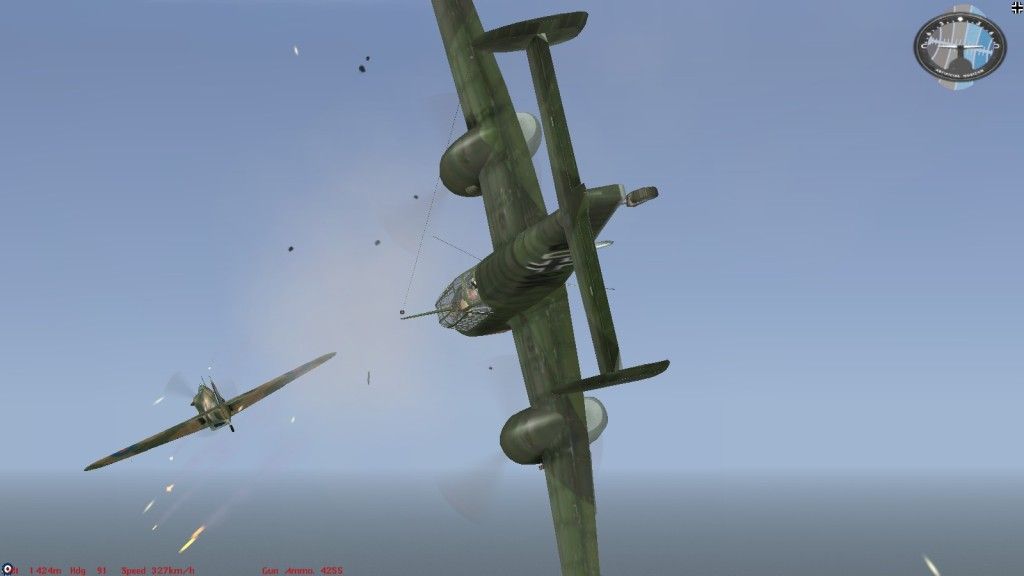
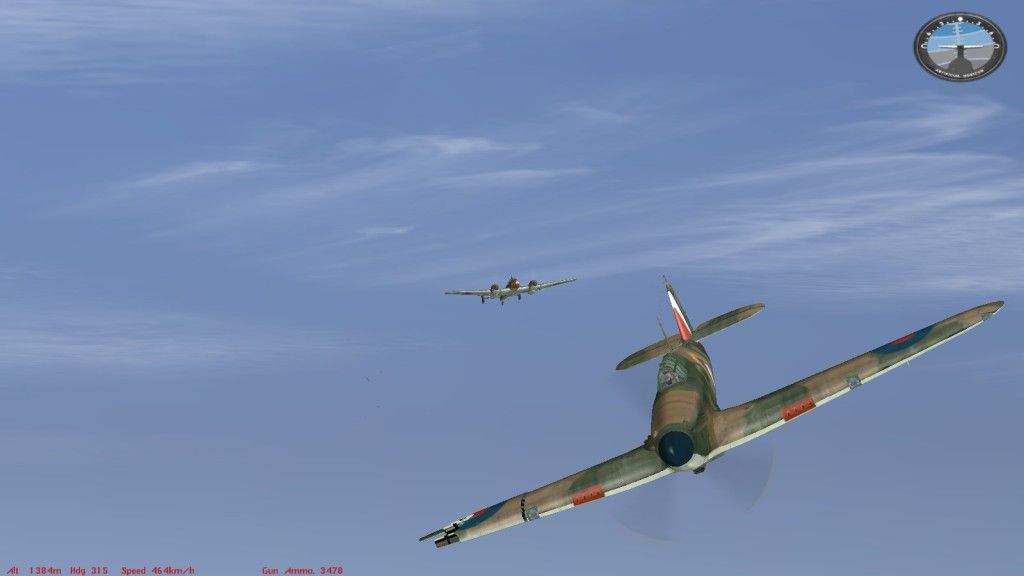
Suddenly his gunner called a Hurricane on their six. He turned to face it.
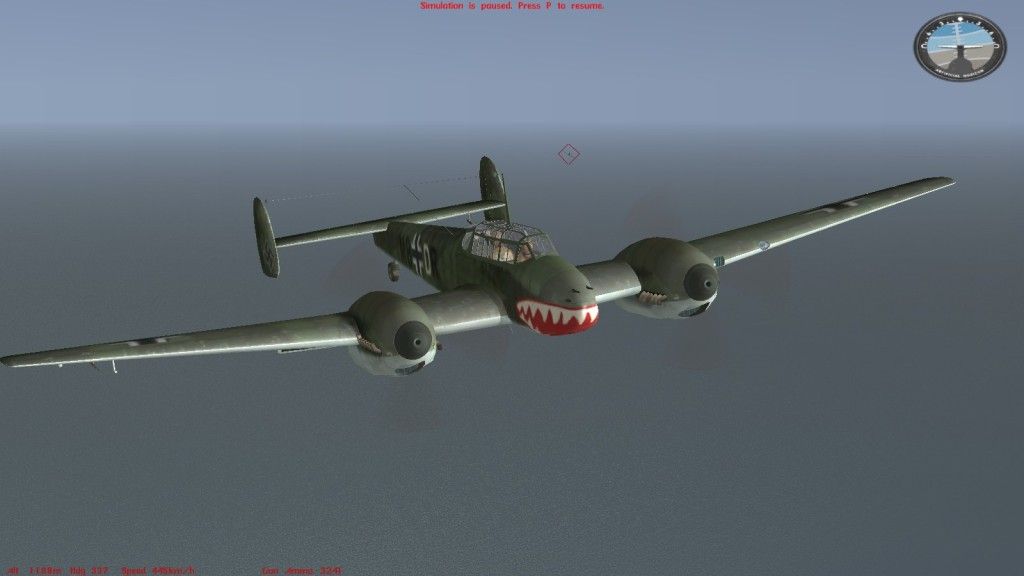
This pilot was a little better, opening fire during the merge, and the two aircraft met in a hail of tracer.
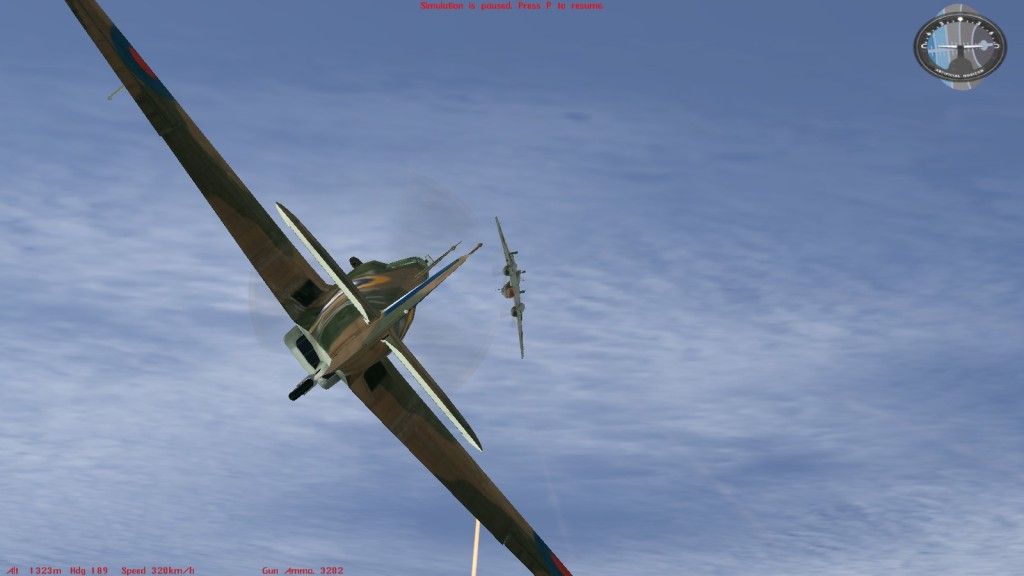
A head on merge with a Bf110 is however, not a tactic to be recommended. As he rounded on the Hurricane, Dickore saw his cone of fire had struck home. The Hurricane rolled on its back, and the pilot leapt into space.

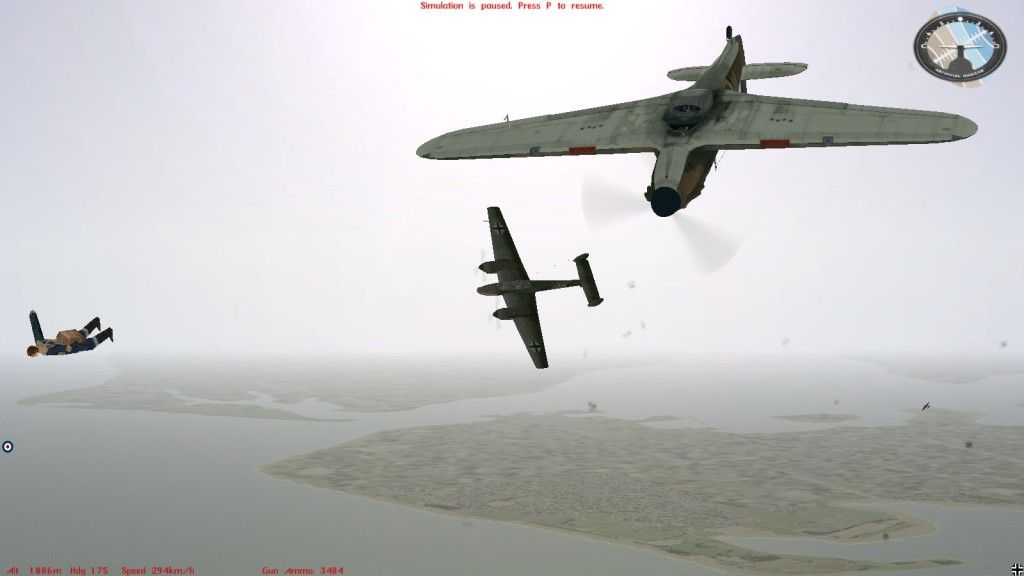
Looking around, Dickore could see his men with the upper hand, engaged against a dwindling number of enemy fighters. He decided to push toward Westhampnett and the Stukas which should be returning after their strike. After his dogfight, he had just enough fuel and ammunition for one more engagement if needed.
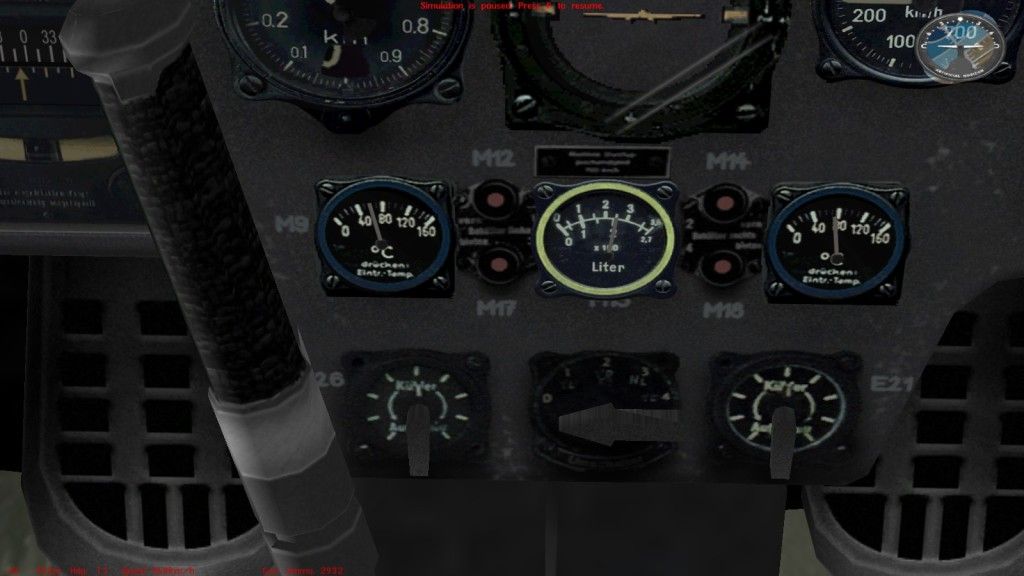
But as they approached Weshampnett, Dickore was surprised to see the sky clear, and the airfield undamaged!
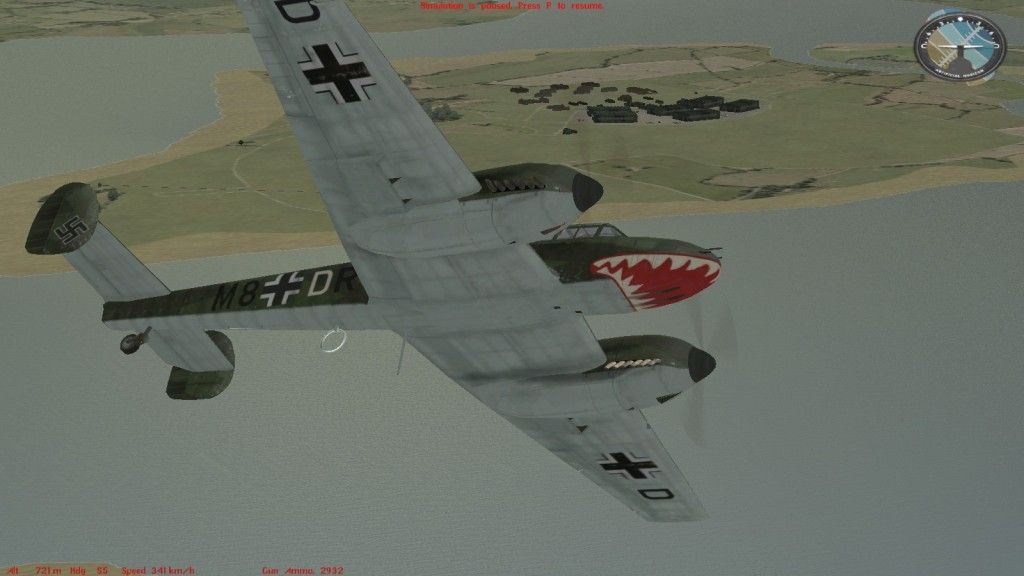
He could see vehicles and aircraft parked out in the open, as if there were no threat at all. He decided to use his ammunition in a strafing run.
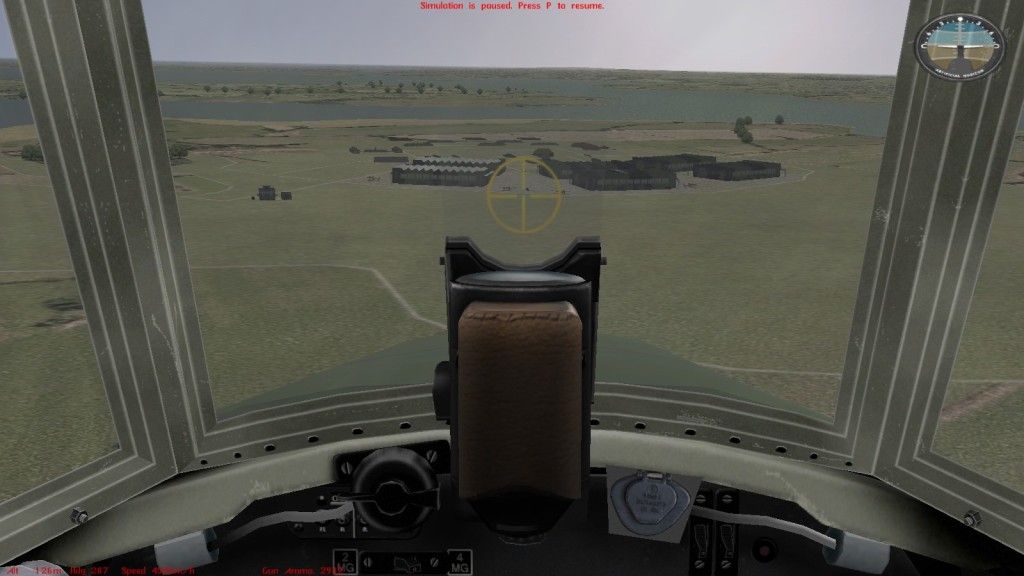
Taking his 110 down on a twin engined aircraft parked between hangars, he let loose with his MG first, and then his cannon.
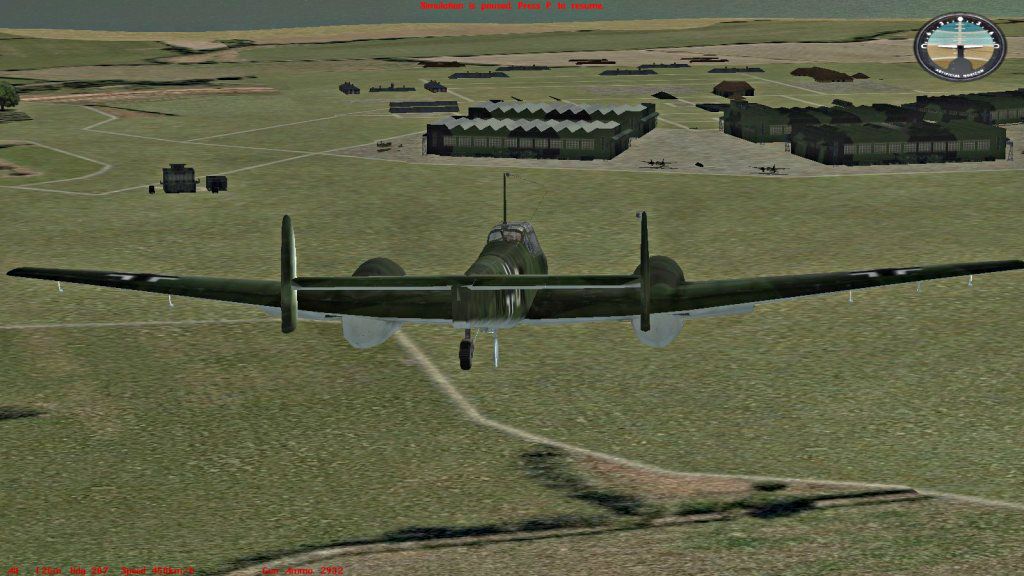
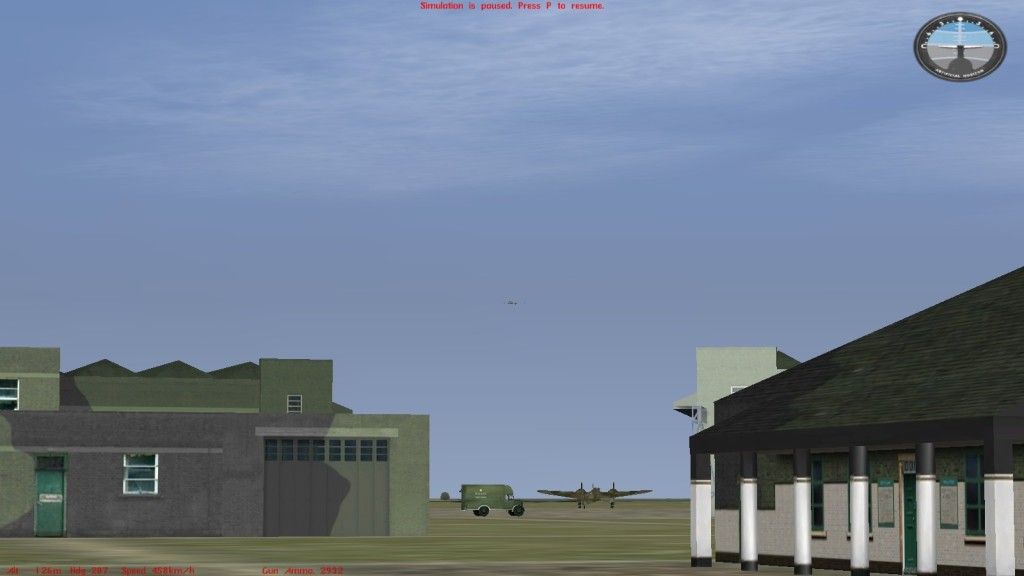
The machine, a Blenheim, must have been fully fuelled or armed, because it went up in a spectacular fireball.
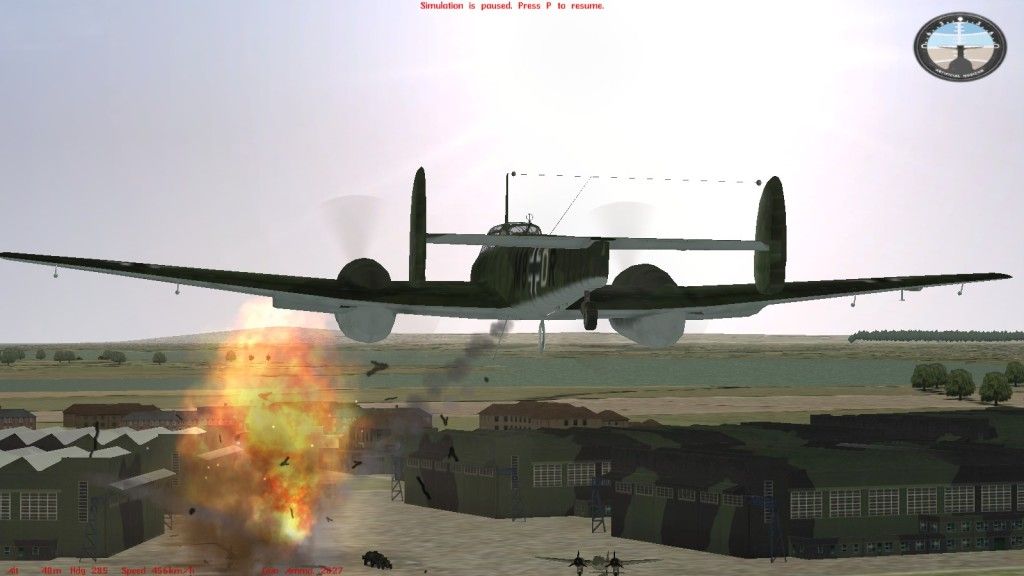
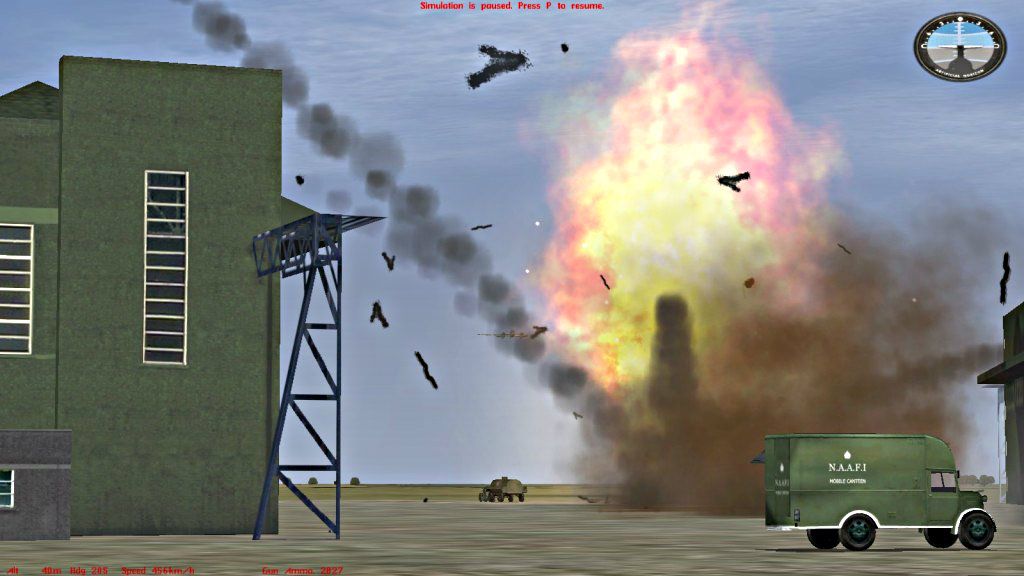
With the airfield flak units starting to wake up, Dickore turned his Zerstorer for home, with 3 kills to his name.
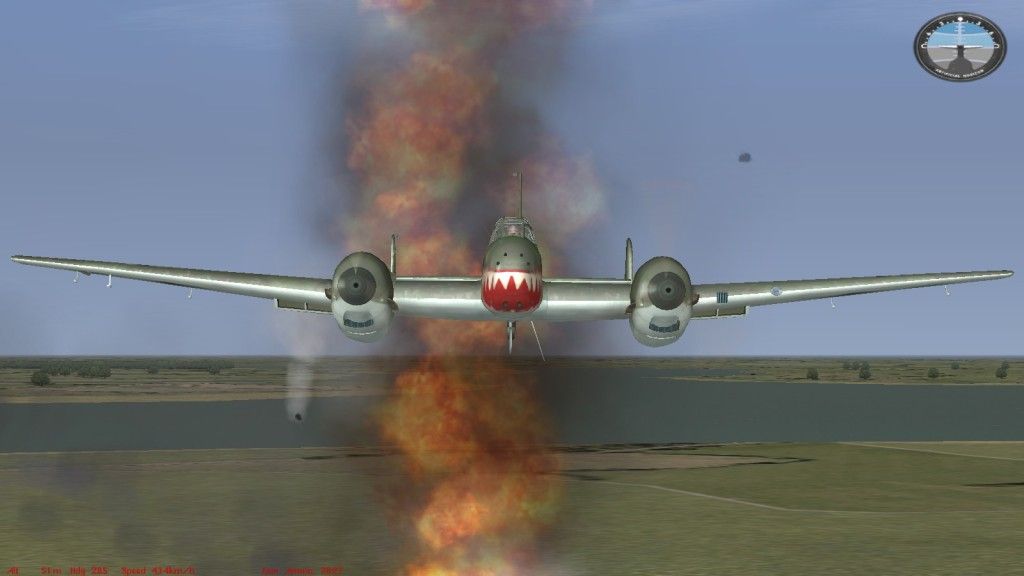
(Later, he would learn that it was not Westhampnett he had attacked. He had strayed west of his intended course, and stumbled over the Ford naval airfield.)
END OF DAY REPORT
In the days fighting 58 RAF fighters were destroyed, for a total to date of 367. The Luftwaffe lost 68 Bf109s, and 16 Bf110s, for a total of 84 fighters lost today. 110 bombers were also lost.
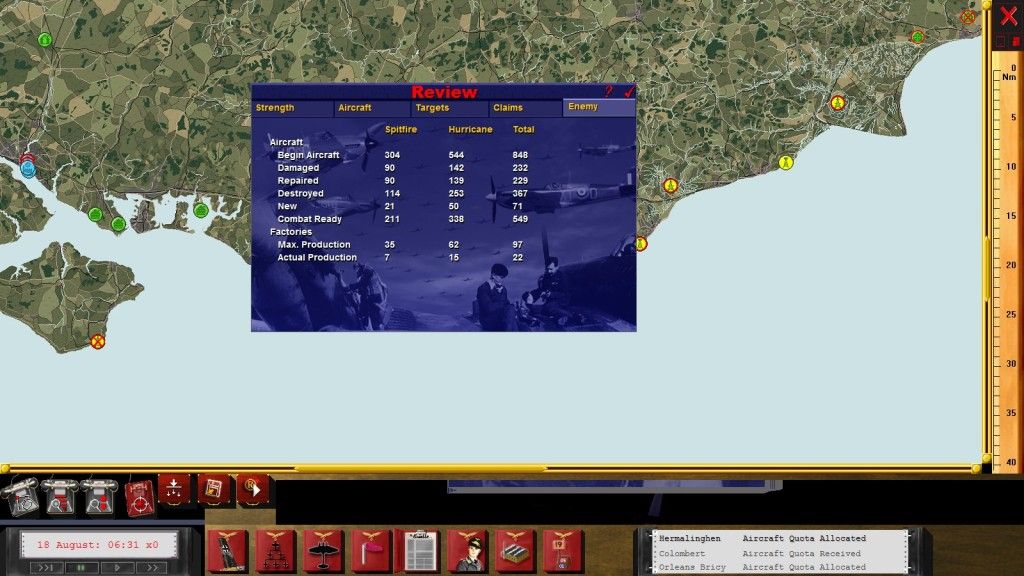
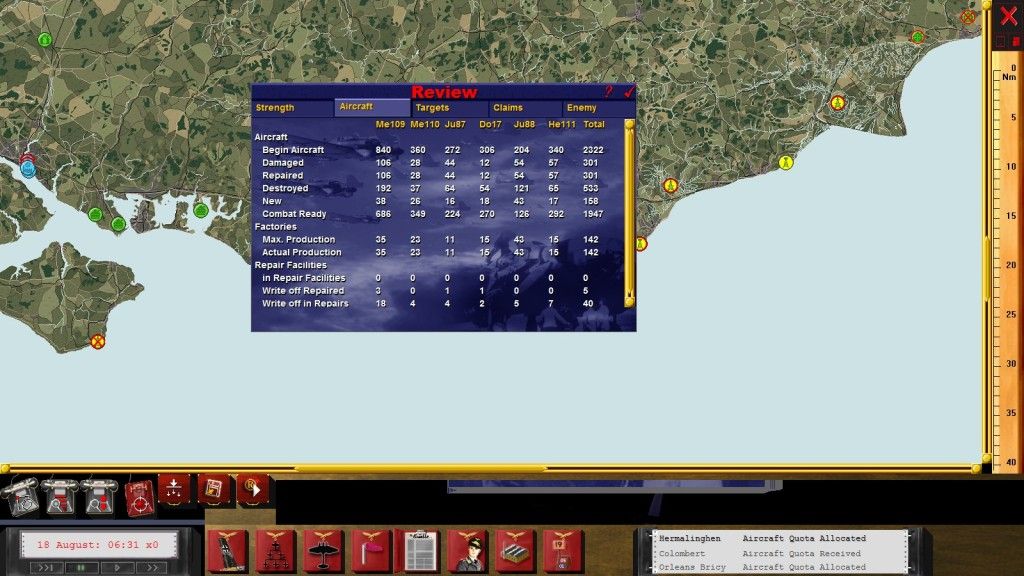
Our Jagd geschwaden have been severely impacted by losses today. 6 gruppen have reported as unfit for operations due to losses or fatigue. (Units are marked with >.<)
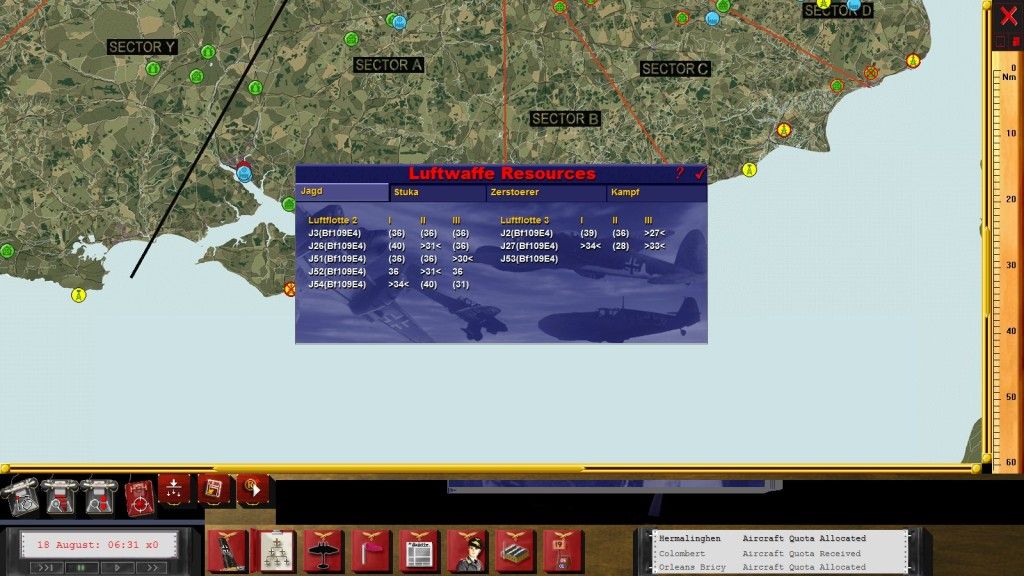
Only two gruppen are likely to be available for morning operations, and the remaining 11 gruppen (see bracketed units, above) should be able to join operations by mid morning or afternoon.
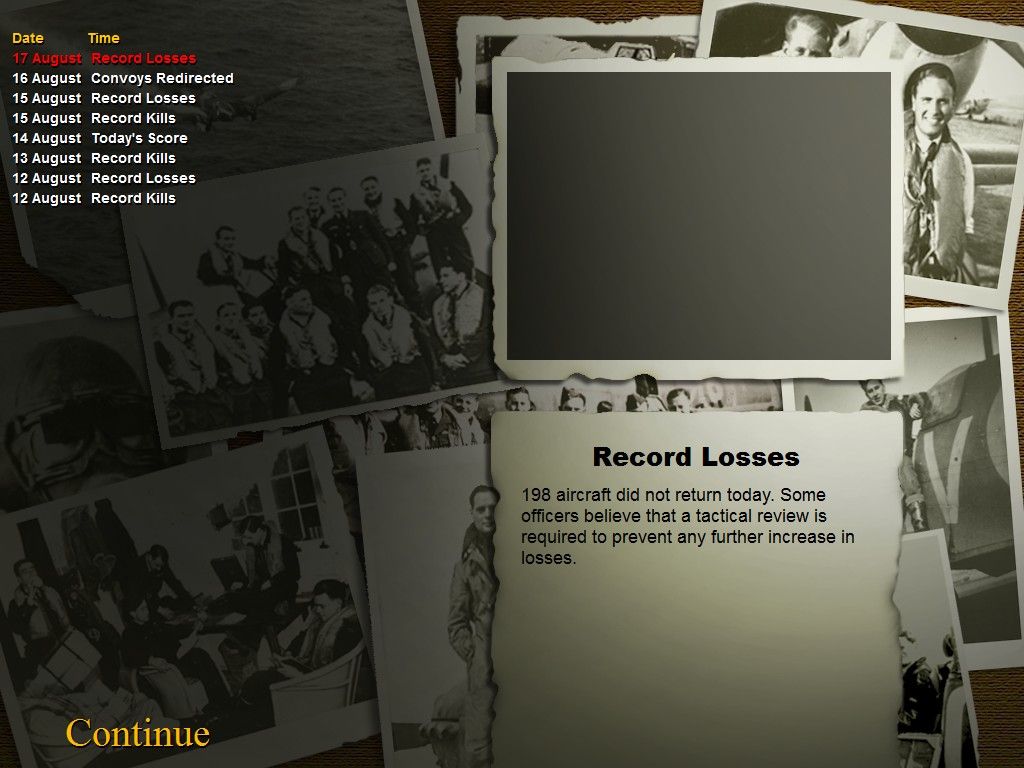
CONCLUSION
Our fighter capacity is in critical condition - not through losses, as much as through fatigue. The intelligence directorate estimates that, although an attempt was made to pair rested and fatigued units in the morning operations, fatigue was likely the cause of the huge losses this morning.
Although the weather forecast for the south of England on the 18th Sept is fine, it is strongly recommended to rest ALL fighter units until at least the evening of the 18th.
Even with this recommendation, options for daytime operations would include:
- unescorted Ju87 strikes on RDF at Dover, Foreness, Rye, Poling
- Bf110 strikes on RAF 11 group coastal airfields, especially Tangmere and Westhampnett given the heavy damage caused to Ventnor RDF, but including Lympne.
- Consideration could also be given to a low level Bf110 C7 raid using Erpro 210, on Middle Wallop in 10 group. This may have the effect of causing the RAF in 10 Group, which has been supporting 11 Group with airfield defence, to keep more units in the West for their own defence.
Your orders Meine Herren?